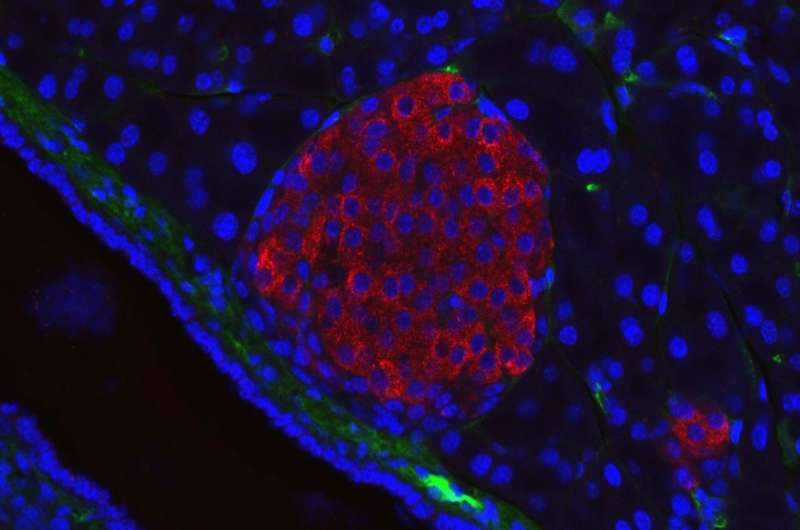This article has been reviewed according to Science X's editorial process and policies. Editors have highlighted the following attributes while ensuring the content's credibility:
fact-checked
peer-reviewed publication
trusted source
proofread
Novel molecular mechanisms in the early development of diabetes mellitus

Researchers led by the University of Tsukuba conducted a gene expression analysis at the single-cell level on pancreatic islets from prediabetic and diabetic mouse models. Their results are published in the journal Diabetes.
Analysis results revealed upregulation of Anxa10 expression in pancreatic beta cells during the early phases of diabetes, attributed to elevated blood glucose levels. This elevated Anxa10 expression was found to influence intracellular calcium homeostasis, leading to a reduction in insulin secretory capacity.
Type 2 diabetes, a prominent form of diabetes, is widely recognized for its association with insulin resistance—a condition wherein insulin becomes ineffective. This ineffectiveness stems from factors such as obesity, disruption of compensatory insulin secretion by pancreatic beta cells (pancreatic beta cell dysfunction), and a decrease in pancreatic beta cell volume. Despite this understanding, the pathogenesis and mechanistic underpinnings of the disease remain unidentified.
To address the knowledge gap, researchers at the University of Tsukuba performed single-cell gene expression analysis on islets from db/db mice, a diabetes model. Their objective was to elucidate the changes in the constituent cells of islets—the insulin-producing tissues in the pancreas—throughout the progression of type 2 diabetes from a healthy to a prediabetic state and eventually to a diabetic state.
The analysis identified 20 cell clusters, encompassing β cells, α cells, δ cells, PP cells, macrophages, endothelial cells, stellate cells, ductal cells, and acinar cells. Additionally, pancreatic β-cells in diabetic model mice were categorized into six clusters as the disease progressed.
Pseudotemporal analysis revealed a novel pathway wherein pancreatic β-cells undergo dedifferentiation and subsequently differentiate into acinar-like cells. Additionally, the researchers identified Anxa10 as a gene specifically upregulated in pancreatic β-cells during the initial stages of diabetes.
They further revealed that Anxa10 expression is triggered by elevated calcium levels in pancreatic β-cells, contributing to a reduction in insulin secretory capacity. These findings are expected to elucidate the molecular mechanisms underlying type 2 diabetes, particularly in its early stages, and pave the way for the development of novel preventive, diagnostic, and therapeutic strategies.
More information: Kaori Motomura et al, Single-cell transcriptome profiling of pancreatic islets from early diabetic mice identifies Anxa10 for Ca2+ allostasis toward β-cell failure, Diabetes (2023). DOI: 10.2337/db23-0212

















